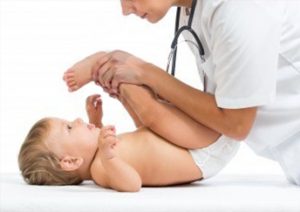Baby Feet deformities Physiotherapy Treatment London. Paediatric physiotherapist at home or at the practice in London
Excellence Physiotherapy offers assessment and treatment for all baby feet deformities. Our London physiotherapist uses a variety of techniques that are proven to work effectively to treat baby feet deformities and we carry out the treatment during home visits in London, so you don’t have to worry about transporting your baby.
However, if you prefer for your child to be seen at the practice, we offer baby fee deformities and baby club foot treatment at:
- Our clinic in Monument near Bank, Moorgate and London Bridge
- Our clinic in Belgravia Westminster near Victoria, Knightsbridge and Sloane Square
- Our clinics in Clapham near Battersea and Balham
Our physiotherapy and osteopathy treatments are covered by most health insurances and are Bupa registered & recognised (BUPA Global and BUPA UK), Axa registered & recognised (AXA International, AXA ppp), Cigna registered & recognised and WPA registered & recognised
For appointment with our London physiotherapist or London osteopath call : 0207 125 0262 – 07824 553765
If you are an Axa or Bupa patient, you cannot book online. Please call our office with your authorisation number.
If you cannot find an appointment that suits you, call us or send us a message: we will do our best to find you a slot.
What are the different baby feet conditions?
When babies are born, it is not uncommon for one foot or both feed to not be straight. However, it is important to understand if this is due to an abnormality, or deformity, as the first can be corrected whereas the latter can be improved but not entirely corrected via only physiotherapy, as they are often related to neurological problems.
If you are unsure if your baby has one of the conditions described below after reading this article, or you can’t identify which condition it is that you see on your child, Excellence Physiotherapy offers a complete health assessment by our Paediatric Physiotherapist. Please contact us for more information.
What are baby feet abnormalities?
Abnormalities are usually caused by the position of the baby’s feet in the uterus. As pregnancy advances and the baby grows, the space in the uterus decreases. If the feet have assumed an uncomfortable position, it is difficult for the baby to move them to the opposite direction due to the lack of space. The abnormality persists after delivery, because one of the muscles is retracted and the opposite muscle is stretched. The most common abnormalities are:
- Calcaneovalgus foot, also called out-toeing. In this condition, the foot is sharply angled at the ankle and pointing upward. In some cases the top of the foot might touch the shinbone. This is the most common abnormality in newborn babies.
- Metatarsus adductus, also called in-toeing or pigeon toes. In this condition, the front part of the foot is turned inwards. Babies with this condition are at increased risk for developmental dysplasia of the hip (DDH). It occurs in approximately one out of 1,000 births.
- Talipes equinovarus, also called flexible clubfoot. In this condition the foot points downward and the front half twists inward. The heel cord is tight and calf muscles are smaller than usual. Clubfoot occurs in one to two per 1,000 births.
These abnormalities respond well to physiotherapy and can be completely corrected, so the feet return back to the normal position after a few sessions. The physiotherapist will stretch the retracted muscle, will stimulate the stretched muscle by tickling the reflex zones and will make a small strapping for the foot to correct the position. The baby will keep the strapping between the sessions to train the foot to stay in a good position.
What are baby feet deformities?
Foot deformities are more difficult to correct, but they can be improved. The rehabilitation involves a close cooperation between the physiotherapist and the doctor because a cast and surgery can be necessary. These deformations are rare and although the rehabilitation is complex, it is an important component of the recovery. The most common deformities are:
- Talipes equinovarus, also called non-flexible clubfoot. In this condition, the foot is usually short and broad and points downward and twists inward, as with the clubfoot abnormality described above. The difference that in this case, the foot isn’t flexible and can’t return to the original position completely only with physiotherapy.
- Vertical talus. In this condition the foot turns outward and is very flat, as if the arch curves down instead of up.
If you are an Axa or Bupa patient, you cannot book online. Please call our office with your authorisation number.
If you cannot find an appointment that suits you, call us or send us a message: we will do our best to find you a slot.


